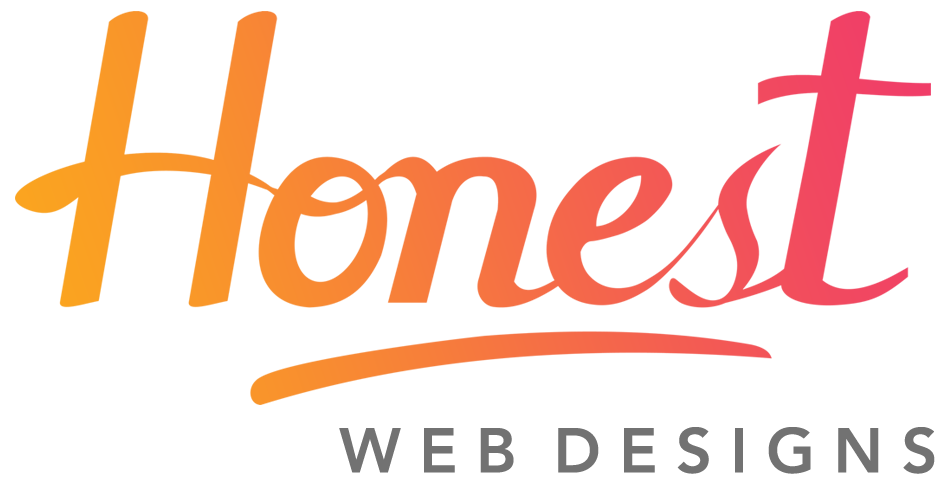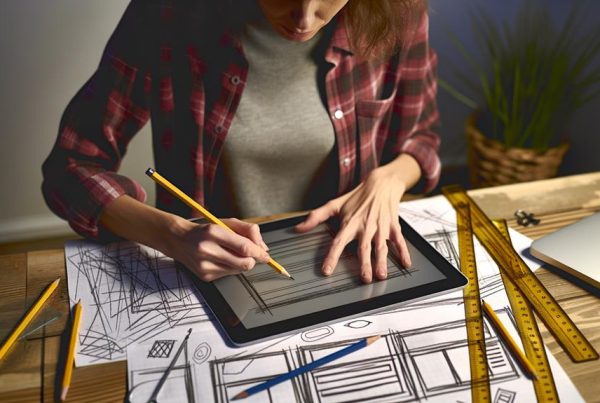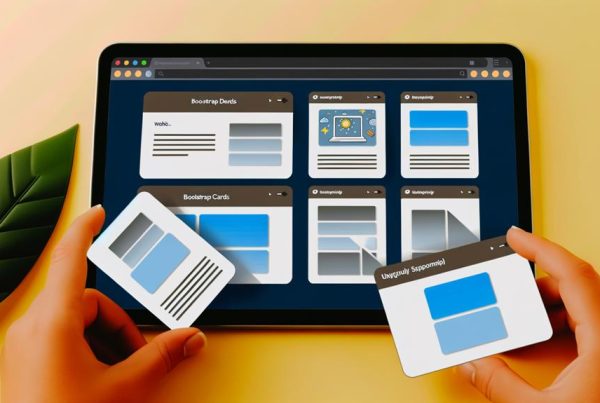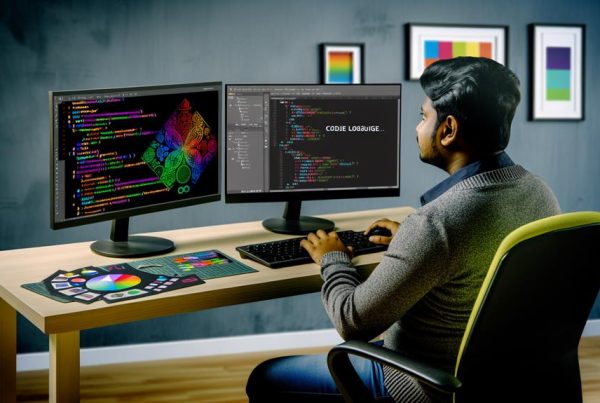As a team, we've recently uncovered a powerful yet often overlooked tool for enhancing usability testing: eye tracking technology. You might not realize just how insightful eye tracking can be in understanding user behavior and engagement.
It's not just about seeing where users look; it's about gaining real-time insights into their focus and scanning patterns. But that's just the tip of the iceberg.
The potential applications of eye tracking in optimizing websites, improving user experience, and informing design decisions are vast and impactful.
Join us as we unravel the mysteries of eye tracking and explore its potential to revolutionize usability testing and drive user engagement.
Understanding Eye Tracking Technology

Eye tracking technology revolutionizes understanding of user behavior by capturing real-time insights into where individuals are looking and what they're focusing on, providing invaluable data for improving user experience.
This technology allows us to gain deep insights into user behavior, understand what captures their attention, and identify areas for improvement. With eye tracking, we can optimize websites by enhancing text, fixing stumbling points, and creating more engaging visuals.
It offers a comprehensive understanding of website effectiveness and eliminates reliance on unreliable participant recall. By using eye tracking, we can create a website that delivers an exceptional user experience, driving user engagement and ultimately leading to higher website conversion rates.
This technology liberates us from guesswork, providing objective and accurate insights to enhance the overall user experience.
Benefits of Eye Tracking
Revolutionizing our understanding of user behavior, eye tracking technology provides invaluable insights into where individuals focus their attention, offering comprehensive data to enhance user experience.
The benefits of eye tracking are undeniable:
- Reveals subconscious behavior patterns
- Unveils what users notice and overlook, providing deeper insights.
- Identifies elements that capture attention and those that fail to engage.
- Enhances user experience and engagement
- Empowers marketers to optimize designs based on actual user behavior.
- Drives website conversion and improves overall user satisfaction.
- Provides real-time feedback for immediate improvements
- Identifies stumbling points and obstacles, allowing for instant adjustments.
- Offers tangible results to inform decisions on website design and copy.
Eye tracking technology is a game-changer, liberating us from assumptions and delivering concrete data to shape user-centric experiences.
Eye Tracking in Usability Testing
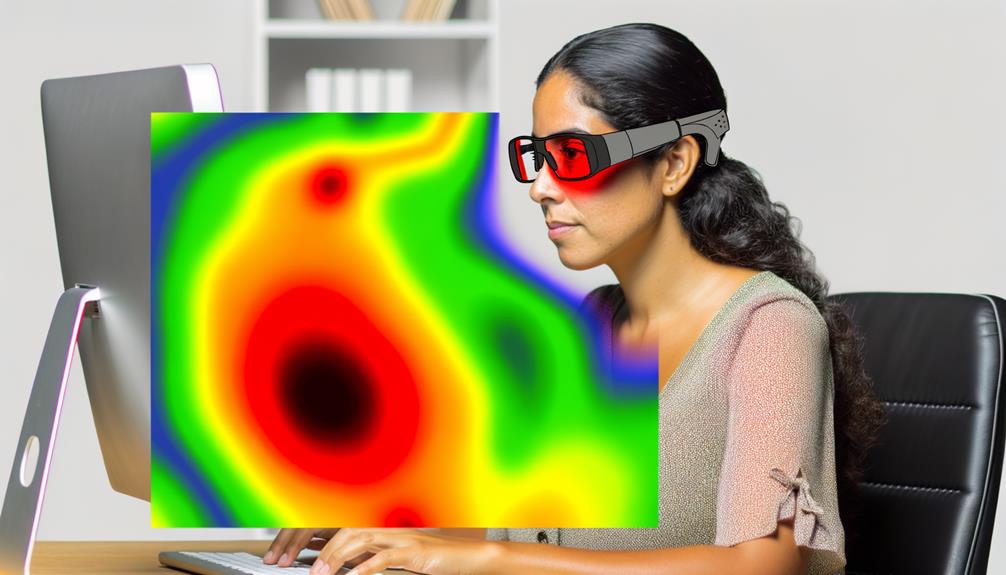
In usability testing, the application of eye tracking technology provides invaluable insights into user behavior and interaction patterns. It offers real-time understanding of how users engage with interfaces, revealing crucial information for optimizing UX design. Take a look at the table below for a quick comparison of traditional testing methods and the benefits of incorporating eye tracking technology:
| Traditional Testing Methods | Eye Tracking Technology |
|---|---|
| Limited insight into user gaze patterns | Real-time tracking of user gaze and fixation points |
| Reliance on user self-reporting | Objective and accurate data on user behavior |
| Time-consuming analysis | Immediate identification of stumbling points |
Utilizing Eye Tracking UX Technology
Utilizing eye tracking technology in UX testing revolutionizes our approach, offering real-time insights into user behavior and interaction patterns.
When it comes to leveraging this technology, there are crucial steps to ensure its effectiveness:
- Simplicity in Setup: Connecting the eye tracker to a participant's device is straightforward, streamlining the testing process.
- Pre-Testing Preparation: Testing the technology beforehand guarantees its seamless operation during actual testing sessions.
- Optimization for Accuracy: Ensuring optimal lighting and consistency across settings is essential for obtaining accurate and reliable results.
Setting Up Eye Tracking for Testing
Setting up eye tracking for testing requires meticulous attention to detail and careful consideration of environmental factors to ensure accurate and reliable results.
The process begins by connecting the eye tracker to the participant's laptop and thoroughly testing the technology beforehand. Optimal lighting and consistent settings are crucial for obtaining precise insights, and it's essential to ensure that the eye tracker is compatible with participants wearing glasses.
Once the technology is tested and settings are optimized, valuable insights can be gained from eye tracking. This approach provides marketers with objective and accurate data, eliminating the reliance on unreliable participant recall.
Impact of Eye Tracking on User Experience
Eye tracking technology revolutionizes our understanding of user experience by providing real-time, objective insights into user behavior and engagement patterns.
The impact of eye tracking on user experience is profound, as it allows us to:
- Gain objective and accurate insights into user behavior, eliminating reliance on unreliable participant recall.
- Understand website effectiveness comprehensively, enabling the enhancement of text and creation of visually appealing elements based on eye tracking insights.
- Deliver an exceptional user experience by optimizing website design and content to align with user behavior and engagement patterns.
With eye tracking, marketers can make informed decisions that result in websites tailored to provide an enhanced user experience, ultimately driving user engagement and satisfaction.
Enhancing User Engagement With Eye Tracking
With the profound impact of eye tracking on user experience, we can now focus on optimizing user engagement through this innovative technology.
By utilizing eye tracking, we can gain valuable insights into user behavior and preferences, allowing us to tailor the user experience for maximum engagement.
With this technology, we can identify specific elements on a website or in a product that capture and hold the user's attention, leading to a more immersive and interactive experience.
Furthermore, eye tracking enables us to understand how users interact with visual content, leading to the creation of more compelling and effective designs.
Ultimately, by harnessing the power of eye tracking to enhance user engagement, we can create experiences that truly resonate with our audience, driving increased satisfaction and loyalty.
Leveraging Eye Tracking Insights for Optimization
Leveraging eye tracking insights allows us to optimize user experience and drive meaningful engagement on digital platforms. With this powerful tool, we can:
- Identify user attention hotspots and optimize key elements accordingly.
- By understanding where users focus, we can prioritize and enhance important content and features.
- Fine-tune visual hierarchy and layout for maximum impact.
- Leveraging eye tracking insights enables us to create designs that guide users seamlessly through the digital experience.
Test and refine user interfaces iteratively for continual improvement.
- With real-time feedback from eye tracking, we can make data-driven adjustments to enhance usability and engagement.
Eye tracking insights empower us to create digital experiences that captivate and resonate with our audience, ultimately driving meaningful interactions and conversions.
Frequently Asked Questions
How Does Eye Tracking Technology Handle Participants With Different Eye Conditions or Impairments?
We ensure eye tracking technology accommodates participants with various eye conditions or impairments through thorough testing and optimization.
Optimal lighting and adaptable settings cater to diverse needs, ensuring accurate results.
Our approach prioritizes inclusivity, allowing all participants, including those wearing glasses, to engage effectively.
We're committed to delivering insightful and actionable data, regardless of individual differences, empowering us to enhance user experiences for all.
What Are the Potential Limitations or Drawbacks of Using Eye Tracking Technology for Usability Testing?
Potential limitations of using eye tracking for usability testing include technical challenges such as calibration issues and data interpretation complexity.
However, our experience shows that with proper setup and analysis, these limitations can be minimized. We've found that integrating eye tracking with other testing methods can provide a more comprehensive understanding of user behavior.
Our approach emphasizes leveraging eye tracking's strengths while mitigating potential drawbacks for robust usability insights.
Are There Any Ethical Considerations or Privacy Concerns Related to Using Eye Tracking Technology in User Experience Research?
Yes, there are ethical considerations and privacy concerns related to using eye tracking technology in user experience research.
We prioritize user consent, ensuring transparency about data collection and usage. We protect sensitive information and comply with privacy regulations.
Ethically, we aim to minimize intrusiveness and prioritize user well-being. Our approach seeks to balance valuable insights with respect for user privacy and autonomy, aligning with ethical standards and best practices.
How Can Eye Tracking Technology Be Integrated With Other User Testing Methods to Provide a More Comprehensive Understanding of User Behavior?
Integrating eye tracking with other user testing methods enhances our understanding of user behavior. It uncovers real-time insights, complementing traditional testing.
Eye tracking reveals visual patterns, gaze movement, and stumbling points, complementing qualitative and quantitative data.
This comprehensive approach provides a deeper understanding of user interaction, leading to more informed design decisions.
Ultimately, it enables us to create user-centric experiences that drive engagement and conversion.
Can Eye Tracking Technology Be Used to Measure the Effectiveness of Offline Marketing Materials, Such as Print Advertisements or Product Packaging?
Yes, eye tracking technology can measure the effectiveness of offline marketing materials like print advertisements and product packaging. It provides insights into what grabs attention, how long it holds, and what gets overlooked.
This data helps in optimizing design elements and enhancing user engagement. Eye tracking complements traditional methods, offering real-time, objective insights.
Conclusion
In conclusion, eye tracking technology offers a powerful and insightful approach to usability testing. Its ability to provide real-time insights into user behavior and engagement is invaluable for optimizing websites, enhancing user experience, and informing design decisions.
By leveraging eye tracking insights, we can revolutionize usability testing and drive user engagement, ultimately delivering a more intuitive and impactful experience for all.

